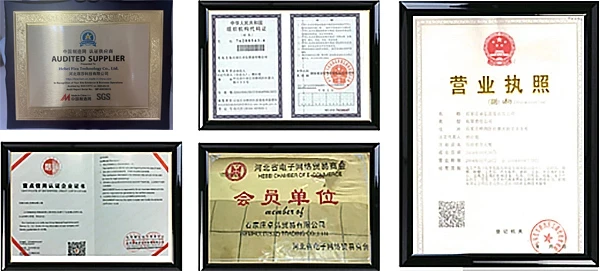



Chlorine Dioxide Applications in Effective Wastewater Treatment Processes and Benefits
Chlorine dioxide (ClO2) has emerged as an effective solution in the treatment of wastewater, particularly due to its strong oxidizing properties. Unlike traditional disinfectants, chlorine dioxide is not only capable of eliminating a wide range of pathogens but also improves the overall quality of treated water, making it suitable for various applications such as industrial processes and agricultural reuse.
One of the significant advantages of chlorine dioxide in wastewater treatment is its ability to operate effectively over a broad pH range, typically between 4 and 10. This versatility allows it to function optimally in various wastewater conditions, treating effluents from municipal sewage, agricultural runoff, and industrial discharges. The compound works through a unique mechanism, selectively destroying microorganisms without forming harmful by-products, a common issue associated with other disinfectants like chlorine, which can lead to toxic chlorinated compounds.
The application of chlorine dioxide in wastewater treatment typically involves the injection of the chemical into the wastewater stream. Once introduced, it rapidly reacts with organic matter and pathogens, breaking down complex molecules and facilitating the removal of leftover contaminants. This ensures a higher degree of disinfection and reduces the chemical oxygen demand (COD) of the wastewater, which is crucial for meeting environmental regulations and safeguarding aquatic ecosystems.
chlorine dioxide wastewater treatment

Moreover, chlorine dioxide is particularly effective in controlling odor, a common issue in wastewater treatment facilities. Its oxidative properties help eliminate sulfide compounds and other odor-causing substances, leading to a more pleasant environment for both operators and nearby communities. The use of chlorine dioxide also minimizes the formation of biofilms, which can hinder the efficiency of treatment processes and necessitate frequent cleaning of equipment.
Despite its advantages, the use of chlorine dioxide does come with certain considerations. Its generation and handling require proper safety protocols to ensure worker safety and environmental protection. This necessitates training for personnel involved in the treatment process and well-established emergency procedures to manage potential hazards.
In conclusion, chlorine dioxide represents a powerful tool in wastewater treatment, offering superior disinfection capabilities, improved water quality, and reduced odor issues compared to traditional methods. As the global focus on water scarcity and pollution intensifies, the adoption of innovative and effective wastewater treatment solutions like chlorine dioxide will be vital in promoting sustainable water management practices. With ongoing research and development, the application of chlorine dioxide may expand further, providing even more efficient and environmentally friendly options for treating wastewater across various industries.
-
Why Sodium Persulfate Is Everywhere NowNewsJul.07,2025
-
Why Polyacrylamide Is in High DemandNewsJul.07,2025
-
Understanding Paint Chemicals and Their ApplicationsNewsJul.07,2025
-
Smart Use Of Mining ChemicalsNewsJul.07,2025
-
Practical Uses of Potassium MonopersulfateNewsJul.07,2025
-
Agrochemicals In Real FarmingNewsJul.07,2025
-
Sodium Chlorite Hot UsesNewsJul.01,2025










